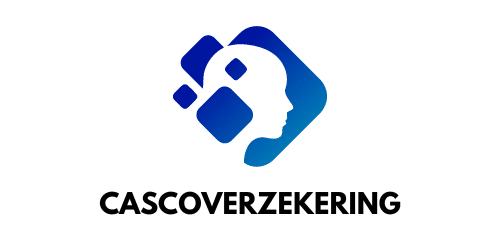Unforgettable commercial ads: 15 masterpieces that inspire

Commercial ads have the power to captivate, inspire, and even stir emotions, making them a vital part of the marketing landscape. This collection showcases 15 unforgettable masterpieces that not only highlight stellar creativity but also reveal the strategies behind their success. Discover how these ads have redefined brand storytelling and learn what makes them timeless examples for future campaigns.
Overview of Commercial Advertisements
Commercial advertisements are essential tools in marketing strategies, serving as powerful vehicles to communicate a brand's message and engage target audiences. These ads not only promote products but also play a pivotal role in brand storytelling and identity formation. The primary types of commercials include television, radio, and digital ads. Each medium offers distinct advantages and opportunities to connect with audiences, from the broad reach of TV to the targeted precision of digital channels.
In parallel : What Breakthroughs in Machine Vision Are Advancing Precision Robotics in Manufacturing?
Implementing effective advertising strategies is crucial for businesses aiming to enhance visibility and profitability. A successful strategy often involves a mix of media platforms, helping to drive business growth with commercial ads. For instance, television commercials remain effective due to their ability to reach large audiences during popular programming. Radio ads leverage the power of auditory engagement, suitable for local promotions and brand jingles. Digital advertising, on the other hand, capitalizes on the internet's vast capabilities for detailed audience targeting and interactive content.
By understanding the diverse formats and implementing robust advertising strategies, companies can amplify their market presence and achieve desired business outcomes. Thoughtfully crafted ads, as showcased by iconic campaigns, underscore the blend of creative storytelling and strategic delivery necessary for impactful commercial advertising.
Also to see : What Innovations in Drone Tech Are Improving Emergency Medical Supplies Delivery?
Iconic Commercial Ads and Their Impact
Notable Historical Campaigns
Historical advertising campaigns have shaped the landscape of commercial advertisements, often capturing the cultural zeitgeist. A prime example is Apple's "1984" Super Bowl ad, which used dystopian imagery to introduce the Macintosh computer, leaving a lasting impression that still resonates today. Similarly, the 1970s Smash ad transformed grocery advertising with humorous portrayals of the "Smash Martians," setting a precedent for engaging audiences beyond straightforward product showcases.
Emotional and Engaging Advertisements
Emotional storytelling is paramount in creating impactful commercials. Nike's "The Last Game" is a classic, blending animation and engaging narrative to captivate viewers emotionally. Likewise, Chipotle's "Back to the Start" leverages emotive visuals and a compelling soundtrack to discuss sustainability, prompting viewer reflection beyond mere consumption. These ads emphasize how emotional engagement can drive deeper audience connection.
Humorous Commercials That Stand Out
Humor in advertisements often drives memorability and brand affinity. IRN-BRU's "New Fella" capitalized on cultural rivalry humorously, enhancing audience engagement. The quirky Cadbury's "Gorilla" ad, featuring a gorilla drumming to Phil Collins, is another example where humor and surprise enriched brand perception, leading to an increase in sales and demonstrating the power of creativity in advertising.
Advertising Techniques and Best Practices
Strategies for Successful Ad Campaigns
In crafting effective advertising campaigns, understanding audience dynamics is paramount. A successful strategy begins with defining a clear target audience and aligning the content to meet their needs. Marketers must leverage creative commercials and engage in brand storytelling in ads, which enhances emotional connections, essential for audience retention and brand loyalty.
Measuring Advertisement Effectiveness
Evaluating ad success requires clear advertising metrics and KPIs. Techniques like analyzing advertisement effectiveness through engagement rates, conversion metrics, and audience feedback can provide insights into a campaign’s impact. Incremental lift analysis and attention analytics are pivotal tools in understanding real-time performance and making data-driven adjustments to campaigns.
Targeting Specific Audiences
Audience targeting in ads entails the artful use of segmentation to tailor messages specifically to diverse demographic groups. Digital platforms now allow for enhanced precision targeting, as seen from insights on Hispanic ads and advanced segmentation. This approach ensures that ads reach those most likely to engage, thus improving response rates and optimizing advertising spend.
By incorporating these strategies, businesses can create impactful advertising campaigns that resonate with their audience, ensuring enhanced engagement and improved ROI.
Trends in Commercial Advertising
Evolution of Commercial Formats
The landscape of commercial formats has transformed remarkably over the years. Once constrained to radio and television, advertising has expanded to include countless digital advertising outlets. This shift is driven by the desire to reach a wider, more targeted audience using versatile formats like video marketing strategies and immersive storytelling techniques.
Role of Technology in Advertising
Technology plays a pivotal role in the evolution of advertising. Advances in data analytics enable precise audience targeting in ads, improving both advertisement effectiveness and consumer engagement. Embedding cutting-edge VFX or leveraging social media advertising platforms helps create immersive experiences that resonate with viewers, enhancing brand storytelling in ads.
Future Trends in Advertising
Looking ahead, current advertising trends point towards even more sophisticated approaches. The rise of interactive and personalized content is set to redefine consumer engagement, with artificial intelligence and machine learning optimizing campaign effectiveness. Furthermore, ethical advertising practices will grow in importance, as consumers increasingly value authenticity and transparency in branded content examples. Embracing these trends will be pivotal for brands aiming to thrive in this dynamic landscape.
Case Studies of Successful Campaigns
Analysis of Effective Ad Campaigns
Successful commercial advertisements often balance creativity with strategic elements like audience targeting and emotional appeal. Iconic examples include Nike's "The Last Game" and Apple's "1984" ad, both known for their storytelling prowess and cultural impact. These campaigns demonstrate that connections made through narratives can amplify brand messages and elevate marketing effectiveness.
Lessons Learned from Successful Advertisements
From memorable television commercials to viral online ads, the pattern remains: creativity and emotional engagement lead the charge. For instance, Chipotle's "Back to the Start" showcases not just the product but the brand ethos through music and visual storytelling. Meanwhile, ads like Dove's "Evolution" harness social commentary to alter industry narratives and inspire viewer introspection, proving that impactful messaging can transcend product promotion.
The Impact of Creativity and Storytelling
Creativity in ads isn't just about visuals; it's about crafting branded content that resonates. IRN-BRU’s humorous take on cultural rivalries, and Heineken’s inventive engagement strategies suggest that creativity can invigorate brand loyalty and broaden market reach. For brands looking to replicate this success, investing in meaningful storytelling and understanding consumer behavior through advertising psychology can drive campaigns that leave lasting impressions.
The Role of Emotion in Advertisements
Emotional Appeals in Advertising
Emotional marketing is pivotal in creating impactful advertisements. By tapping into human emotions, brands can forge deeper connections with their audiences. Appeals to emotions such as happiness, nostalgia, and fear are common tactics used to engage viewers. For instance, the John Lewis ad "She's Always a Woman," with its rich portrayal of human experiences, demonstrates how emotional storytelling can transcend mere product promotion.
Building Brand Loyalty Through Emotional Connection
Brand storytelling in ads fosters loyalty by creating relatable narratives. Emotional ads cultivate a sense of familiarity and trust, which can lead to a committed customer base. Lyft's "June" ad is an excellent example. It not only tells a story but builds a strong community image around the brand through shared experiences. Emotional connections often result in increased brand loyalty and repeat customer engagements.
Case Studies of Emotionally Driven Campaigns
Several case studies highlight the success of emotionally charged campaigns. Chipotle's "Back to the Start" and Nike's "The Last Game" have effectively used emotion to not just narrate a story, but to significantly uplift brand perception. These campaigns demonstrate that an authentic emotional narrative can achieve lasting impressions and drive consumer behavior, underscoring the significance of emotional appeal in advertising strategies.
